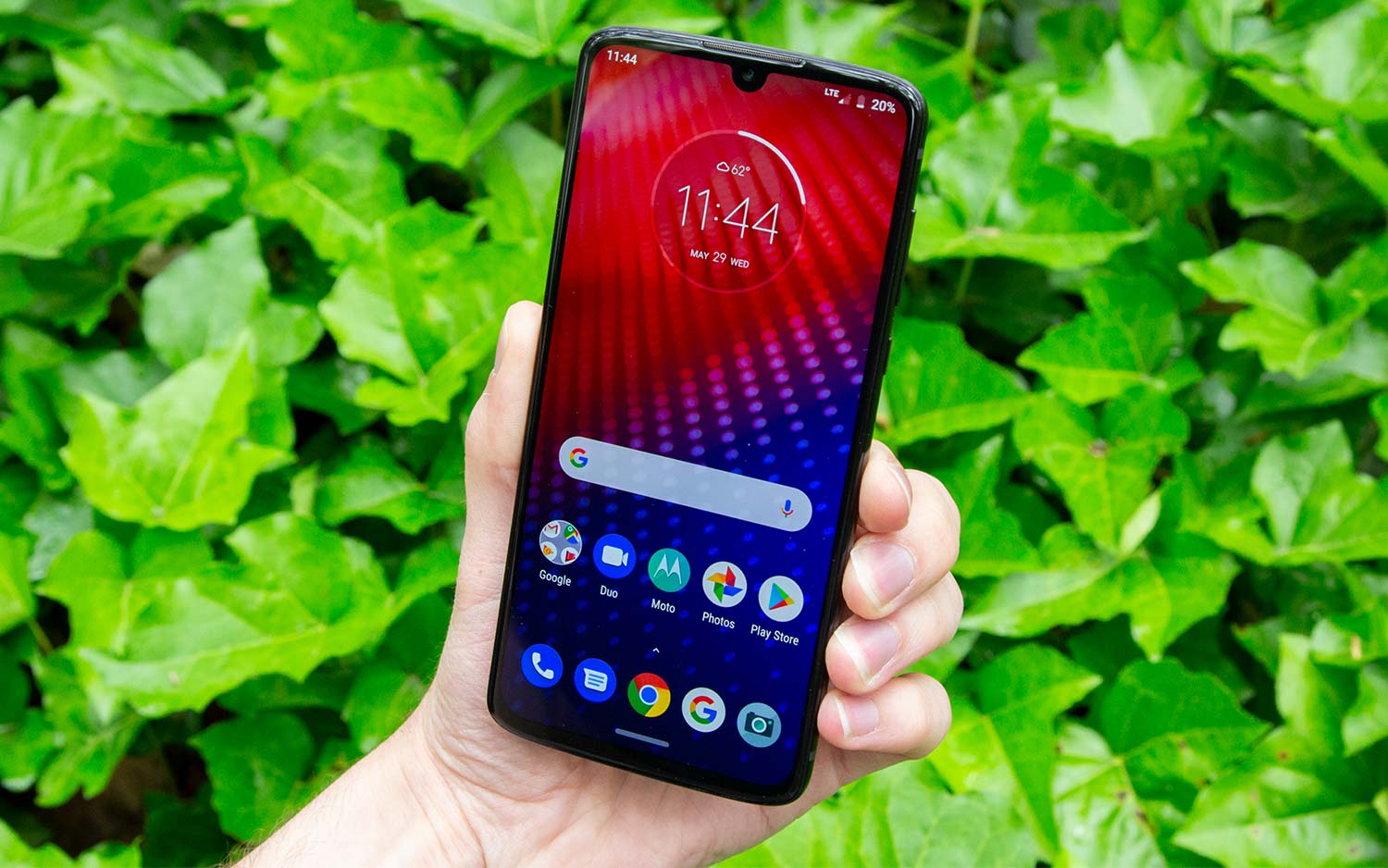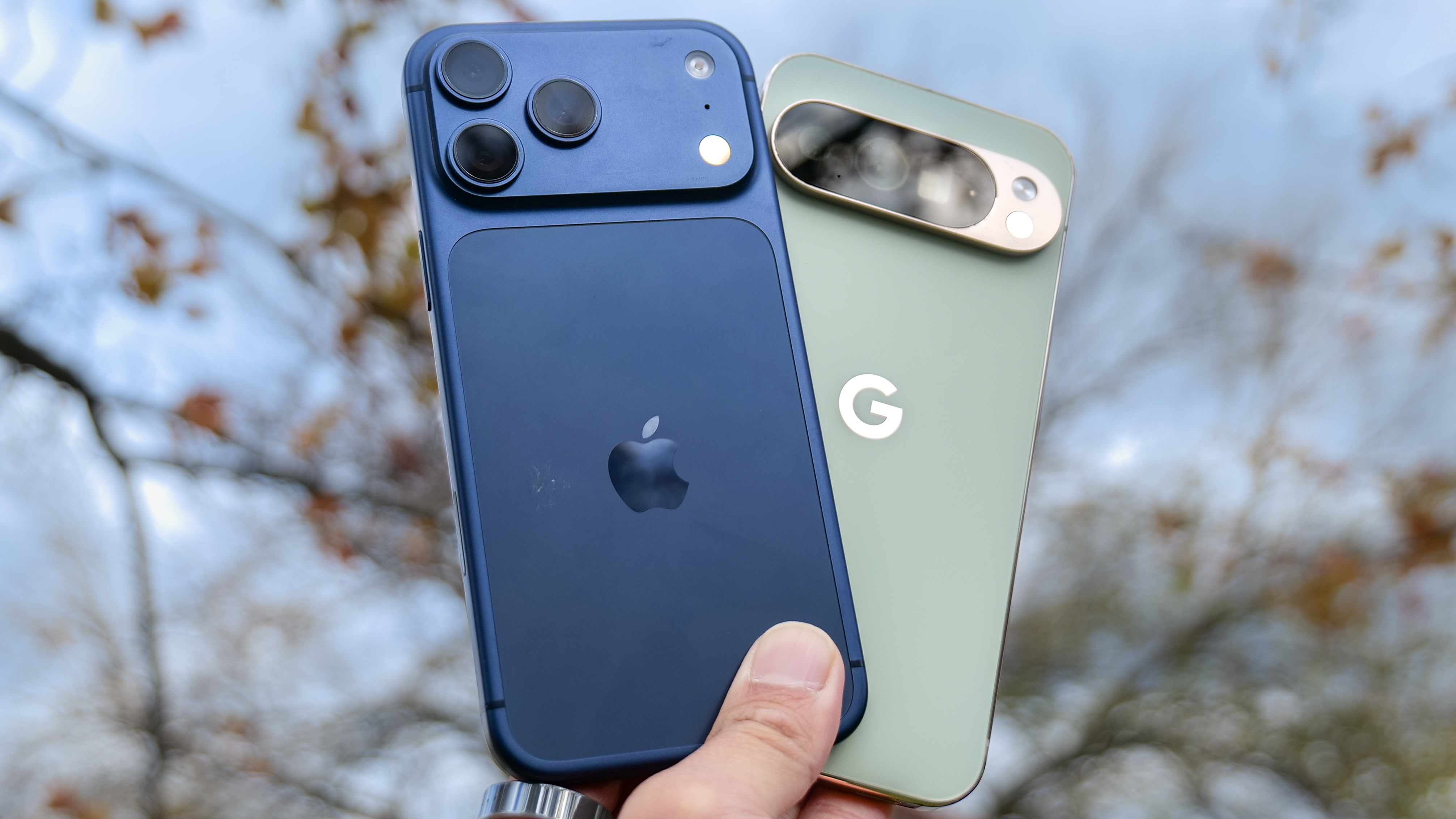Tom's Guide Verdict
The Moto Z4 is worth considering. If you don't think you'll miss the Pixel 3a's superior camera, the Moto Z4 is a reasonable alternative for its improved performance, roomier display and sturdier design — though it's still far from perfect.
Pros
- +
Attractive, solid design
- +
Headphone jack
- +
Big OLED screen
- +
Good performance for the price
- +
Solid battery life
- +
Relatively inexpensive path to 5G
- +
128 GB of storage standard
Cons
- -
Pixel 3a's camera is still better
- -
Display can be dim
- -
Slow to charge
- -
Finicky in-screen fingerprint sensor
- -
Moto Mods have run their course
Why you can trust Tom's Guide
Updated June 13 1:48 p.m. ET: Review updated with impressions of the Night Vision camera feature and news about a great deal on the Moto Z4 for new Verizon customers at Best Buy.
What even is a flagship phone, anyway? That's the question Motorola appears to be asking with the Moto Z4, the latest iteration of its modular handset that mixes premium design and features with somewhat modest hardware, for an attractive price.
Like the Moto Z3 Play before it, the Moto Z4 starts at $499. However, Motorola has confirmed it won't be releasing a more powerful Force variant of the Z4, as it has with previous entries to the Z lineup. That means the Z4 — with its humble Snapdragon 675 chipset — is the range-topping Motorola device for 2019, at least in North America where the company's Motorola One line isn't available.
In fairness, though, the Moto Z4 can do things other phones can't. It supports the full range of Moto Mods, so it can work on Verizon's 5G network with the help of the 5G Mod. At $499 — either unlocked or through Big Red — the Z4 is a formidable adversary for our new favorite midrange handset, the Pixel 3a. Just don't expect its camera to compare to Google's.
| Price | $499 |
| OS | Android 9 Pie |
| Screen Size (Resolution) | 6.4-inch OLED (2340 x 1080) |
| CPU | Qualcomm Snapdragon 675 |
| RAM | 4 GB |
| Storage | 128 GB; microSD expandable up to 512 GB |
| Rear Camera | 48 MP (ƒ/1.6) |
| Front Camera | 25 MP (ƒ/1.9) |
| Battery Size | 3,600 mAh |
Pricing and availability
The Moto Z4 is sold both unlocked and through Verizon for $499. The unlocked device hit Best Buy, B&H Photo and Amazon June 6; it comes with the 360 Camera Moto Mod packed in. That Mod debuted at $199, but you can find it on Amazon for about $50 these days.
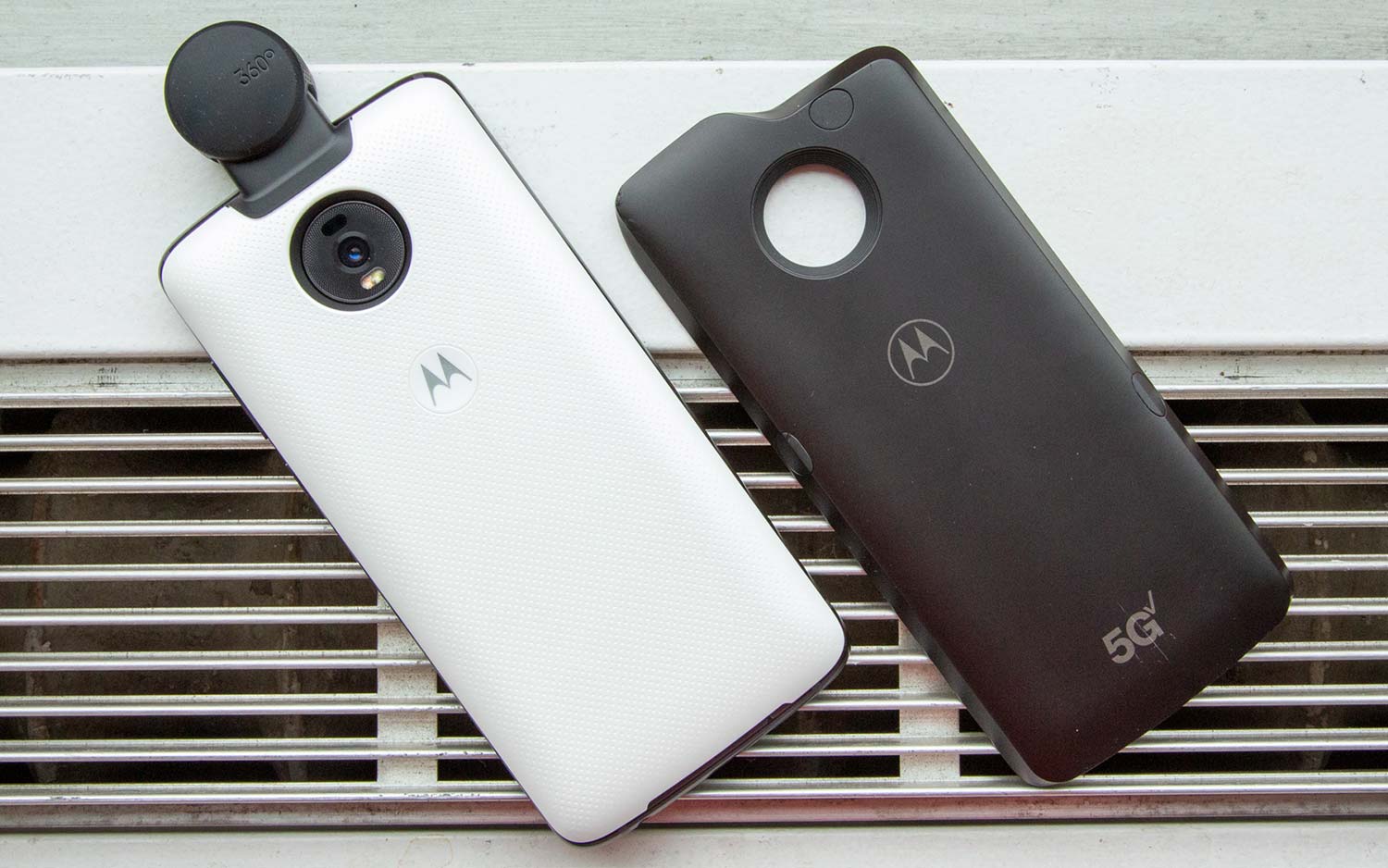
Like all of Motorola's unlocked handsets, the Z4 can run on GSM- and CDMA-based networks alike. Only the Flash Gray model is available at launch; the Frost White version is coming later this summer.
There’s something about the way the gold Mod pins play off against the matte white that is delightfully classy. The Moto Z series has never looked better.
As for Verizon, things get a bit more interesting. The carrier is offering a limited-time promotion whereupon new activations will be able to snag the Moto Z4 and a 5G Mod for $439. That lowers the barrier to 5G service considerably — the Galaxy S10 5G costs $1,299 for context — though you'lll still have to pay for either Verizon's $85 Beyond Unlimited or $95 Above Unlimited monthly plans to get 5G service. (Right now, 5G access is provided in these plans for no extra charge, though eventually it'll cost an extra $10 per month.)
Get instant access to breaking news, the hottest reviews, great deals and helpful tips.
Alternatively, anyone opening a new line with Verizon can get the phone itself for a total of $240, or $10 per month over 24 months — essentially getting the phone for half off. And for a limited time, Best Buy will sell the phone for half that — $120 total, or $5 over 24 months — for activations on new lines.
Design: The smartest-looking Z yet
Because the Moto Z4 supports Moto Mods, and because the spec for the Mod platform date back three years, there's no getting around the Z4's proportional similarity to prior Moto Z models. Motorola is locked into a design, to a certain extent. It can't really change the shape of the device without breaking Mod compatibility.

That's not to say the company hasn't done a lot to improve the Z series design where it can. The Z4's new 6.4-inch OLED display incorporates a teardrop notch and features minimal bezels all around. The back of the phone is glass, but it's been etched in a matte finish that feels really pleasing to the touch. Doug Michau, Motorola's head of product operations, told me this wasn't a cheap process to implement, but the team felt it was a worthwhile one. I'm inclined to agree.
Using the Z4’s in-screen fingerprint sensor will feel like ages to anyone used to instantaneous capacitive scanners.
The Z4 comes in two colorways — Flash Gray and Frost White — and while our sample unit is of the Gray variety, I really dig the aesthetic of the latter flavor. There's just something about the way the gold Mod pins play off against the matte white that is delightfully classy. Motorola’s modular phones have never looked better.
Finicky fingerprint sensor
You won't find a fingerprint sensor on the back or sides of the Moto Z4, and there's certainly no room for it on the front, given how tight those bezels are. Motorola has opted for an optical in-display fingerprint sensor here, which makes a lot of sense for the Z line.

Sadly, the sensor is less useful in practice. The scanner in the Z4 is one of the fussiest in-display solutions I've used. Like other optical systems, the scanner is sensitive to pressure and placement. And even after you've gotten acclimated to its preferences, there'’s still a palpable delay — at times as much as 1.3 seconds — before you're through to your home screen. That might sound fine enough on paper, but I assure you it'll feel like ages to anyone used to instantaneous capacitive sensors. For what it's worth, Motorola says the sensor is at least clever enough to learn from false readings over time, so it should get faster and better with continued use.
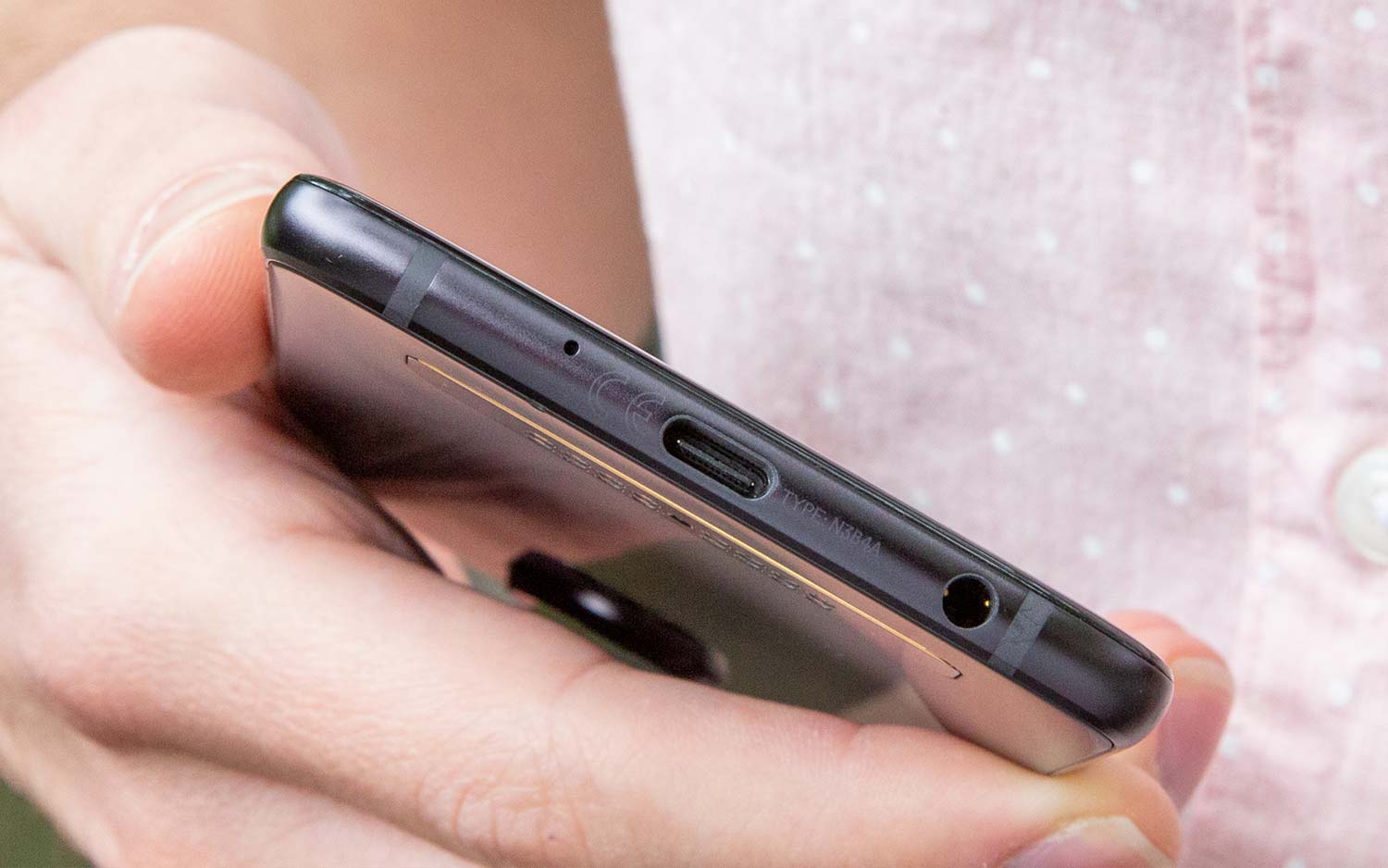
One last point on the Z4's design front that shouldn't go unnoticed: Motorola has brought back the headphone jack for this phone, after nixing it on the original Moto Z out of a desire to make that older model as slender as possible. (People apparently care more about being able to use their existing accessories rather than shaving off a millimeter of thickness — who would've thought?) Strangely, though, the Z4's single speaker isn't next to the 3.5-millimeter port — it's actually on the top edge. That's not necessarily a bad thing, just really unusual.
Display: Colorful, but dim
While the Moto Z's footprint stays the same, the display within it has grown markedly year after year. What started as a 5.5-inch panel is now a 6.4-inch OLED display with slim bezels all around and a notch up top.

With a 2340 x 1080 resolution, satisfyingly punchy hues and good visibility no matter the viewing angle, the Moto Z4's screen is all-around great for this price. In fact, I prefer it to the Pixel 3a's OLED display, which exhibits a slight green cast and doesn't maintain its color balance quite as well when you aren't looking at it straight on.
That said, the Pixel 3a can get brighter; where the Moto Z4 topped out with a peak full-screen brightness of 380 nits under our light meter, the Pixel 3a reached 401 nits. The Pixel 3a also exhibited slightly more accurate hues, owing to its Delta-E score of 0.18, versus the Z4's 0.24 result (numbers closer to zero are better). Those who prefer more saturated colors, however, will appreciate the Z4's 221% coverage of the sRGB gamut. Conversely, the Pixel 3a topped out at 182%.
Camera: Google keeps its crown
Motorola has tried to make the biggest strides with the Z4's camera. On the back of the device lives a whopping 48-megapixel lens with an ƒ/1.6 aperture and optical image stabilization.
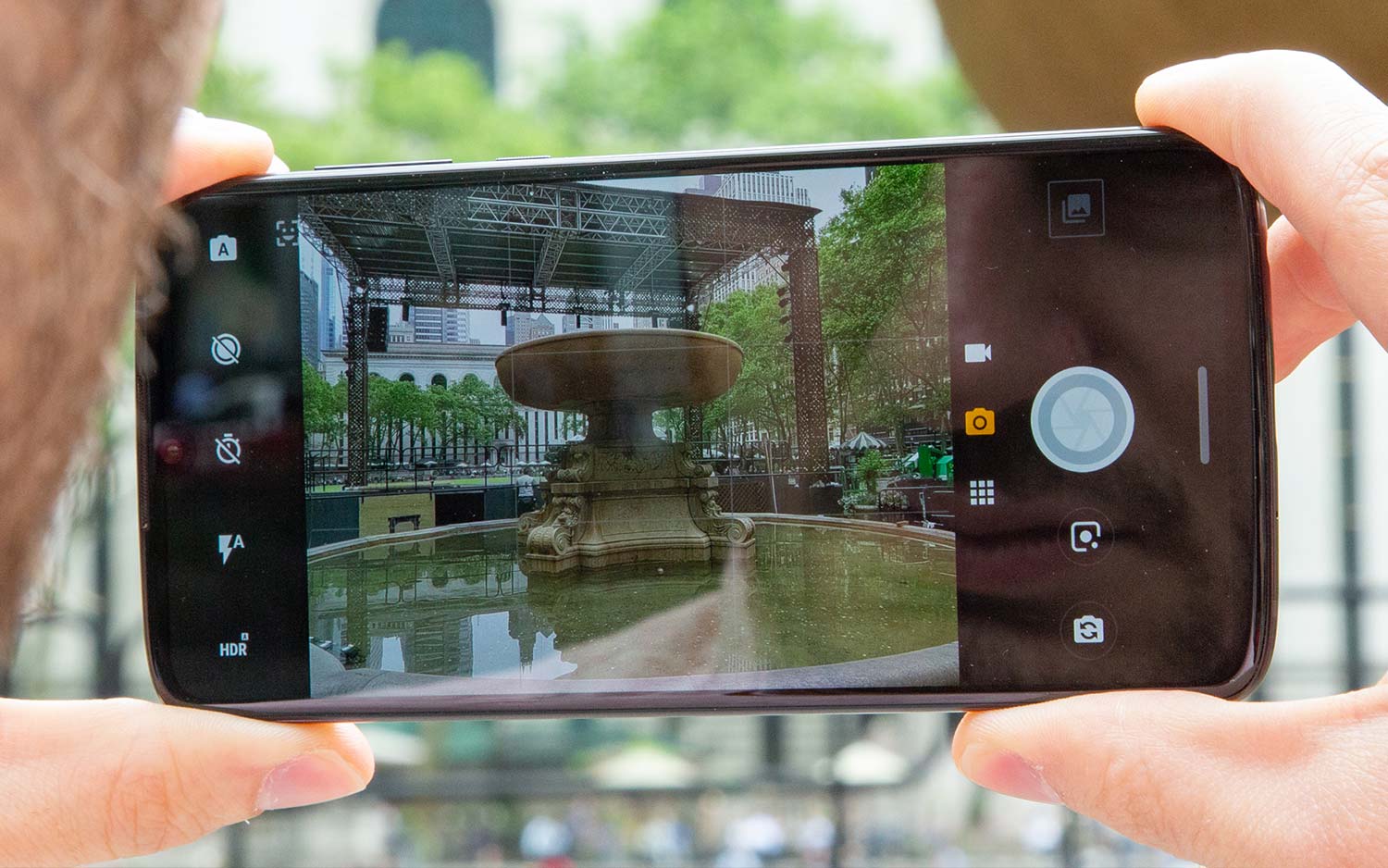
That's the highest megapixel count of any image sensor that Motorola's embedded into a phone, and thanks to the addition of quad-pixel binning — a trick employed by our current top camera phone, the Huawei P30 Pro — the Z4's camera has been designed to use that wealth of data captured to pump out optimized 12-MP shots with superior low-light detail. The same goes for the 25-MP selfie shooter notched in the Z4's OLED screen, which also benefits from pixel binning technology.
Those are exciting features you don't typically find in a $499 smartphone. And yet, they haven't appeared to make the Z4's photography appreciably better — especially compared with the just-released $399 Pixel 3a.
Capturing a pair of portraits of my colleague Caitlin, the Z4 obviously opts for a more zoomed-out perspective. Neither of these devices feature telephoto lenses, though Google's software crops in within the frame to get closer to the subject, so the resulting portrait is a bit more dramatic.
There's some roughness concerning the way blurring is handled around Caitlin's hair in the Pixel 3a's rendition. That's not surprising, given that many mobile cameras struggle with long hair in shallow depth-of-field shots. But overall, the Z4's unnaturally warm cast, blurring of finer details (like the texture of the subject's skin) and inconsistent separation between the foreground and background, particularly around the stone ledge, lose this round for Motorola.
Looking out from the edge of Bryant Park outside Tom's Guide's New York office, the Moto Z4 delivered another decent yet somewhat hazy shot, that plainly lacked the presence and contrast that the Pixel 3a achieved. Motorola's 48-MP sensor crisply rendered the people relaxing on the lawn, as well as the stage banner at the far end of the park. However, the sky is a bit too gray, the clouds are flat, and the colors are smoky in general. Yet Motorola can claim a small victory — at least the Z4 avoided the lens flare that plagued the left edge of the Pixel 3a's shot.
Turning to some photos that demonstrate the Z4's zoom capabilities, we can see how Motorola has tried to use software to make up for the lack of a secondary telephoto lens. Both the Z4 and the Pixel 3a were tuned to 2x power here, though Google's Super Res Zoom technology clearly wins out. Even ignoring the profound difference in color (the Z4's balancing is nowhere close to the real conditions), Motorola's computational photography still can't resolve the wrinkles and velvety texture of the petals, or the semi-furry sheen of the greenery below.
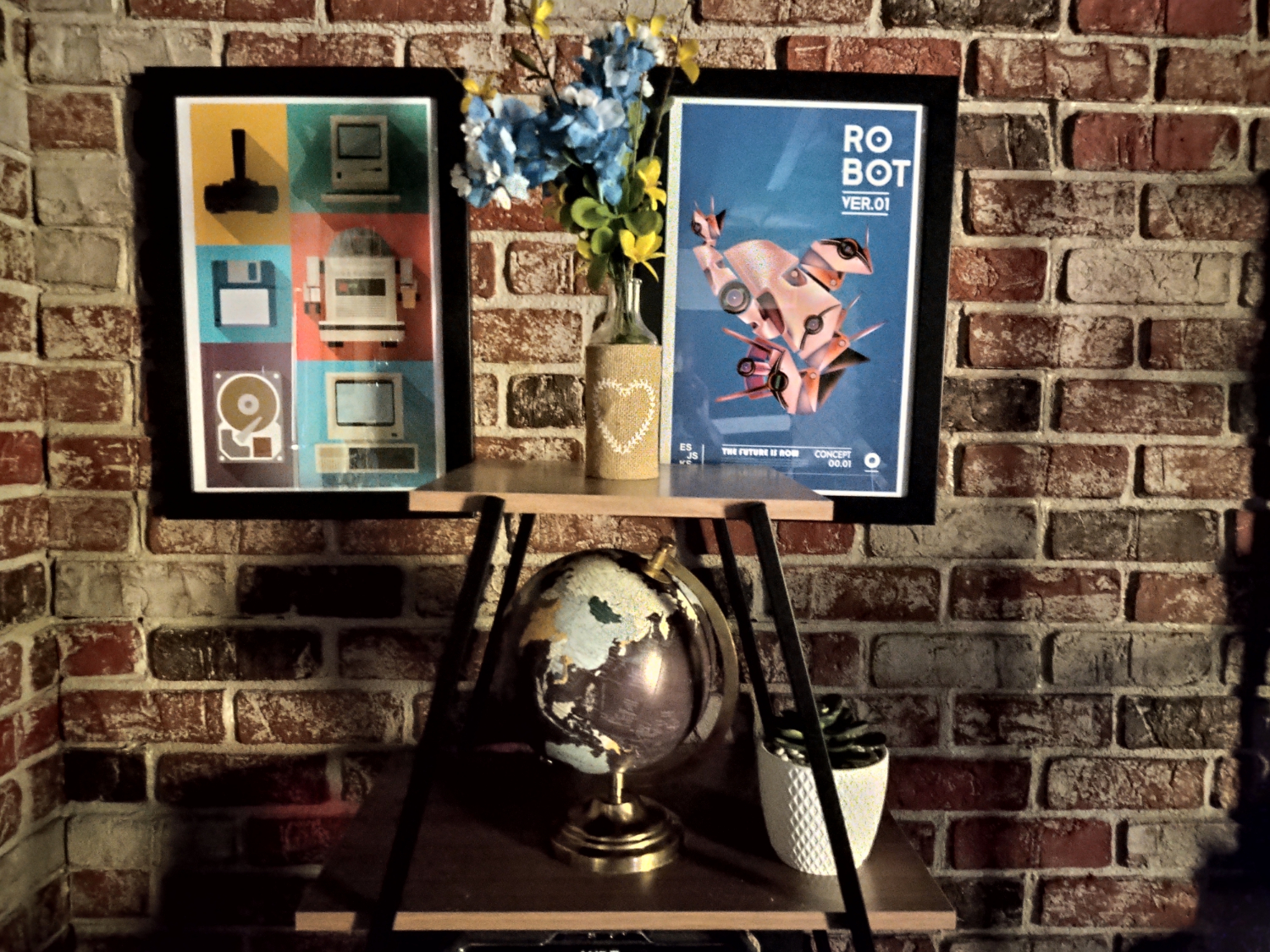
Improving low-light photos is a priority for pretty much every smartphone maker these days, and much like its rivals, Motorola has decided to tackle that problem with the help of software. The Z4 introduces Night Vision, which combines eight frames of an image, as well as dynamic noise reduction and sharpening, to produce a cleaner result despite dim surroundings.
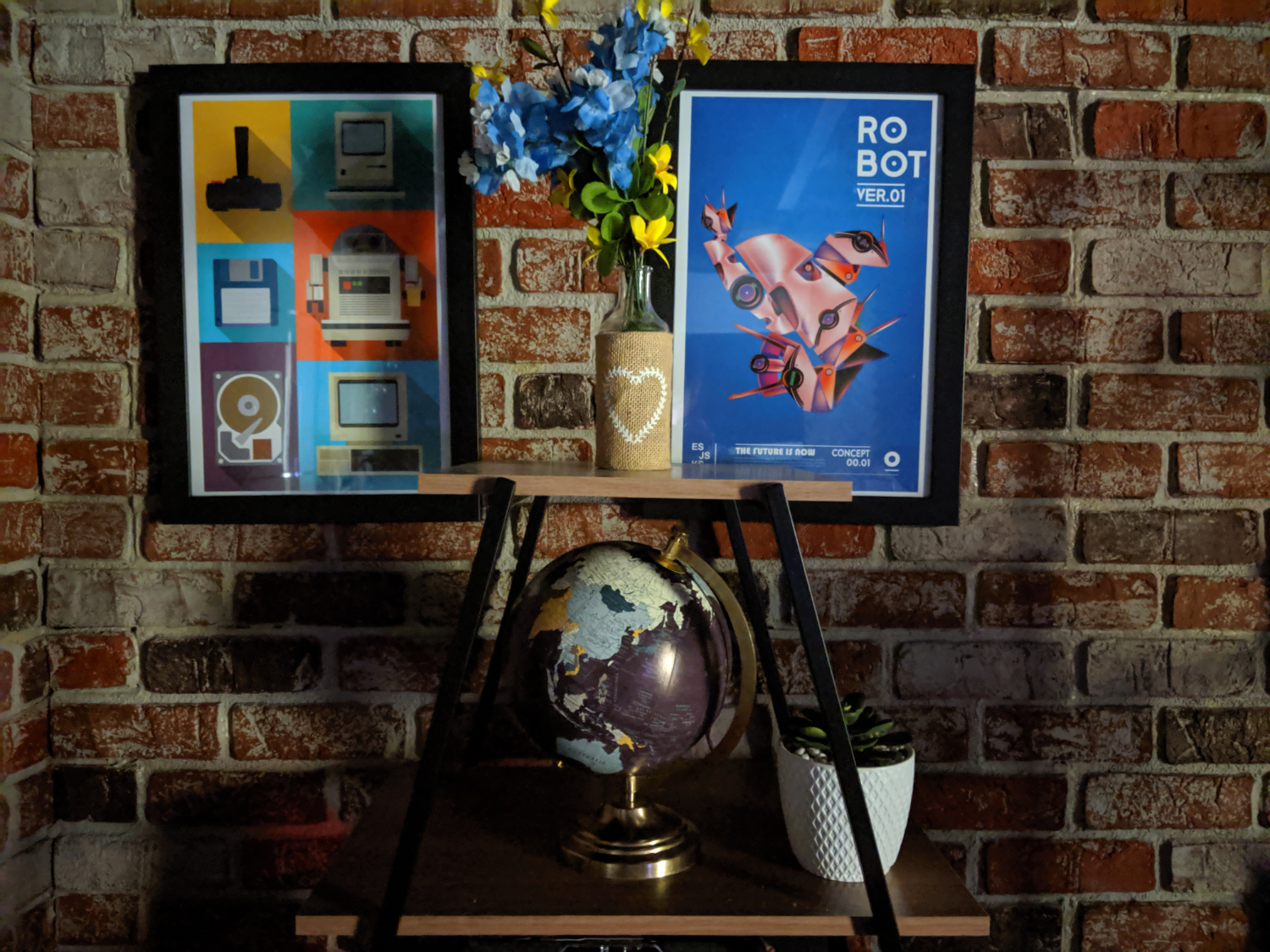
Initially, Night Vision was't enabled on our Z4 when we first conducted our review. Eventually, an update to the Moto Camera app on the Play Store added the feature, and we're pleased to report the results are quite impressive. Night Vision processed the first of the two photos you see above, taken in our indoor studio with barely any light in the room, in less time than the Pixel 3a managed with its Night Sight mode. The Z4's shot ended up noticeably brighter than the Pixel's, though not as sharp. Additionally, the colors in the faux brick wall and hanging posters are a bit washed out, comparatively speaking, through the lens of the new Moto handset.
Motorola is promising a strong selfie game from the Z4's 25-MP front-facing shooter. Unfortunately, the results don't back up those claims. The Z4 aggressively smoothed the subject's face (even though all retouching features were turned off), glossed over the filtering of sunlight through the leaves of the trees in the background and washed out the lush greens of this summer scene.
MORE: Best Camera Phone 2019
In this example, Motorola's quad-pixel technology may have actually hurt more than helped; while you can opt for full-resolution, 25-MP shots from the front camera in the settings, the default is 5 MP, where every four pixels are binned together. The resulting images taken in this mode are too blurry and low-res to truly impress.
Performance: In line with 2018 flagships
At the heart of the Moto Z4 beats Qualcomm's Snapdragon 675 octa-core chipset. This silicon is the next step up from the 670 CPU inside Google's new Pixel 3a and Pixel 3a XL, and provides adequate performance for everyday use. That chip is backed by 4GB of RAM and a spacious 128GB of storage, while a microSD slot can be used to expand the latter even further.
I was surprised to find that the Z4 defaulted to playing PUBG Mobile at High settings, which is quite rare for a phone not powered by one of Qualcomm's Snapdragon 800-series chipsets. The graphics were crisp and the frame rate was passable, barring some hiccups here and there. That's impressive for a phone that scored only 1,038 in 3DMark's Sling Shot Extreme OpenGL ES 3.1 graphics test; for comparison's sake, the $749 Samsung Galaxy S10e topped out at 5,616.
Regarding overall performance, the Z4 achieved a Geekbench 4 score of 6,506, which is actually quite close to last year's flagships, in whichthe Galaxy S9 and Pixel 3 both finished around the 7,300 mark. That makes the Z4 quite respectable among its midrange competitors — especially when compared with the Pixel 3a's 5,146 score. On the other hand, the $549 OnePlus 6T hit 8,972 thanks to its Snapdragon 845 chipset, so the Motorola's handset still isn't the best value in terms of performance.
Battery life: Excellent endurance, average charging speed
The Moto Z4's battery has seen a sizable bump in capacity, up to 3,600 mAh from 3,000 mAh in the Z3 series. Motorola has also baked in 15-watt fast charging, which won't top the device up quite as quickly as the 18W charging of the Pixel 3a — let alone the OnePlus 7 Pro’s 30W Warp Charge adapter — though it's better than nothing.
MORE: Best Phone Battery Life - Longest Lasting Smartphone Batteries
In our battery test, where we had the device stream websites endlessly over Verizon's LTE network at 150 nits of brightness, the Z4 lasted 11 hours and 31 minutes. That's quite a good result, especially given that last year's Moto Z3 Play endured a respectable 10 hours and 3 minutes. However, the Pixel 3a still managed to eclipse the Z4, at 11 hours and 59 minutes.
Motorola should be commended for keeping Mods around this long. But aside from the 5G Mod, things seem to have hit a dead end.
Still, we wish the Z4 was quicker to charge. The included 15-watt TurboPower adapter got the handset from empty to 37 percent capacity in 30 minutes, which really isn't anything special these days.
Moto Mods: Little has changed
There are currently 13 Moto Mods available, per Motorola's website. Those range from the Insta-Share Projector to a selection of speakers, Mods that transform the Z4 into an Amazon Alexa-enabled smart speaker or a Polaroid-printing camera, and of course, even one that grants it 5G capabilities on Verizon's network. Meanwhile, a few of the more interesting Mods, like the wireless charging Style Shell, have been curiously discontinued.
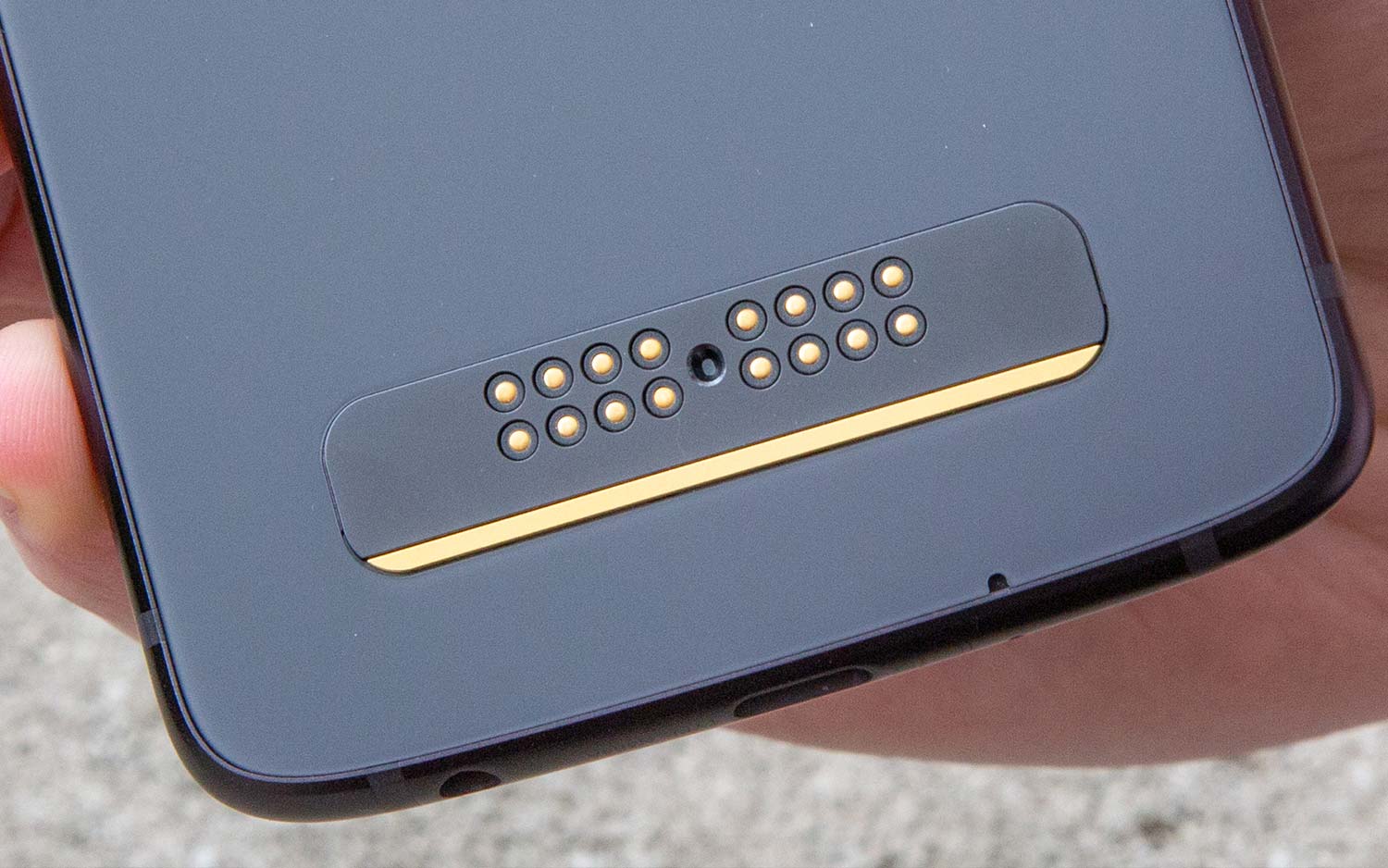
Motorola should be commended for keeping the Moto Mods platform alive and kicking as long as it has. We're now four generations deep, and every single Mod out there — barring the 5G one, which is a bit more complicated than the rest — works with every Z-series handset. In fact, Motorola has confirmed it will soon release an update that will expand 5G Mod support to the Moto Z2 Force on Verizon's network.
And yet, our long-standing qualms about Moto Mods haven't dissipated over the years. Thirteen still doesn't make for a massive selection, especially considering how old (and disappointing, in the case of the Hasselblad Zoom Mod) many of them are.
MORE: 5G Phones: Every Known Phone and Release Date
In fairness, most of the roster has been discounted at this point — that 360 Camera Mod has fallen to a quarter of its original $199 asking price, the projector and Polaroid Mods can be had for around $100 now, and JBL's SoundBoost 2 speaker has fallen from $79 to a much easier-to-stomach $45 on Amazon. On the flip side, perhaps that only signals that development has reached a dead end.
Unless you've already sunk money into the platform — or you're really, really excited about 5G — we're not seeing the kind of investment in new ideas to draw new followers into Motorola's modular vision.
Software: Pure Android, with extras
Armed with Android 9 Pie, the Z4 runs a pure installation of Google's operating system, with the only customizations coming from Motorola's handy gestures and shortcuts. Those include twisting to launch the camera and chopping to activate the flashlight, as well as the manufacturer's One-Button Nav system, which replaces typical Android controls with a swipeable button.

One-Button Nav is arguably cleverer than Google's stock gesture system, as seen in the Pixel 3 and 3a, because it requires a slimmer strip of the display real estate and doesn't implement a separate Back key. Tapping the button sends you home, long pressing triggers the Assistant, swiping left takes you back and swiping right returns to your last-opened app. If you swipe up to the center of the screen, you'll see your recents page, joined by accompanying suggestions for other apps the system thinks you might want to use, given established habits.
You don't have to use One-Button Nav if you don't want to. And just as with previous Motorola phones, that holds true for just about all of the shortcuts and "experiences" housed in the Moto app. However, many of them, like the three-finger swipe to capture screenshots, are pretty useful.
MORE: Motorola Moto Z4 Prices - Compare The Best Plans
The Z4 should see two Android version upgrades during its life — first to Android Q later this year or early next, and then to Android R in 2020. That's one update less than the Pixel 3a will receive, as Google has committed to three years of support for that phone. Additionally, as a Google product, it's worth noting that the Pixel 3a is all but guaranteed to receive updates faster.
Bottom line
Motorola has charted a more iterative cycle of development for its flagship Z series. And while some will certainly lament the lack of a "true" flagship topping the company's portfolio of phones, the Z4 remains a solid — if not awe-inspiring — value in the growing sub-$500 segment.
In fact, Motorola's latest modular effort is a compelling rival to Google's $399 Pixel 3a or $479 Pixel 3a XL — though the phone is for a different type of customer. If you're willing to cast aside Google's best-in-class camera for a slight boost in performance, a roomier display and of course modularity, the Moto Z4 is a good choice. Plus, the Z4s premium metal-and-glass composition just feels sturdier and longer-lasting.
Additionally, there's something to be said for Motorola's 5G ambitions. Although we don't think you need to run out and buy a 5G-ready handset today, as Verizon's 5G network isn't widespread enough yet, it's nice to see a manufacturer spearheading an affordable path to next-gen connectivity.
However, that's a very particular need. Once again, Motorola's latest Z series phone feels like a niche product that only a certain type of customer will truly get the most out of — like a 5G early adopter, or the tinkerer who sees a lot of value in Moto Mods. For everyone else, though, the Pixel 3a's camera, lengthier software support and lower starting price makes Google's device too attractive to pass up.
Credit: Tom's Guide
Adam Ismail is a staff writer at Jalopnik and previously worked on Tom's Guide covering smartphones, car tech and gaming. His love for all things mobile began with the original Motorola Droid; since then he’s owned a variety of Android and iOS-powered handsets, refusing to stay loyal to one platform. His work has also appeared on Digital Trends and GTPlanet. When he’s not fiddling with the latest devices, he’s at an indie pop show, recording a podcast or playing Sega Dreamcast.
